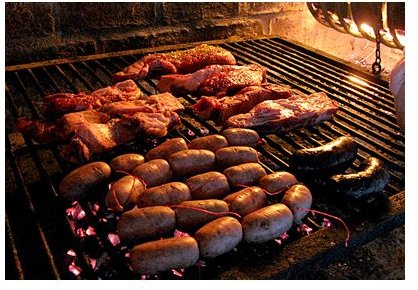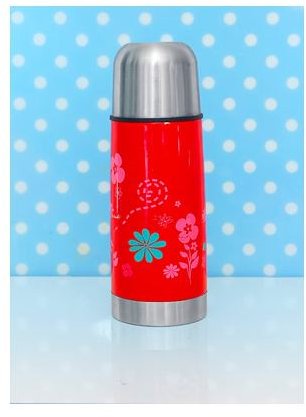Introduction to Heat Transfer: Simple Heat Conduction Experiments
Introduction
We have previously seen that the main methods for heat transfer are conduction, convection, and radiation. Though these topics were treated singly, it is not unusual for all three methods to be operational at the same time.
Thermos Bottle
A thermos bottle is an excellent example demonstrating how all three methods are inhibited. A thermos bottle has a double wall that creates a vacuum, and a shiny surface inside of it. We’ve seen that the shiny part on the inside is an example of radiation, where heat is reflected back from the walls and back to the liquid. Heat conduction is inhibited by the use of insulators such as glass and plastic. Heat does escape, through the body and the lid, but very slowly. The vacuum inhibits convective currents and also conduction.
Cooking Food

Grilling, broiling, and cooking over an open flame when you go camping are examples of cooking by radiation. However, when you grill and place your food on the grates, conduction also comes into play. When the air becomes hot, convection currents are created between the air and the food.
When you bake a cake or pot roast, all three methods are once again involved. There are convection currents as the air becomes hot from the oven. The pan the food is in becomes hot due to conduction. The walls of the oven become hot, and this is due to radiation.
We have previously seen that when you boil or steam food, the air and the water is heated by convection. Solid food, however, is heated by conduction, as the atoms inside of it begin colliding with each other.
Aside from cooking, there are simple heat transfer experiments you can do at home.
A Simple Heat Conduction Experiment
Obtain objects of different materials. Ideally, they would be of the same geometry, such as rods made from wood, glass, aluminum, and iron. However, materials such as plastic, wooden, and metal silverware will do. You will also need a heat source such as hot water, a stove burner, a hot plate, or a candle. To make the measurements, use a watch or some other time keeping device, and a simple thermometer. To record your results, use a spreadsheet or graph paper.
For a direct measurement, use masking or electrical tape to attach the thermometer to an object. Submerge it partially in hot water, and take time and temperature readings every few seconds. Graph the temperature versus time by placing the dependent variable, temperature, on the y axis and the independent variable, time, on the x axis. Do this for every object. Compare your results.
For indirect measurements, melt a substance such as candle wax or paraffin on the object. Slowly heat the object, and record the time it takes for the substance to melt. If you are careful, the substance can also be ice, butter, or something similar. In this case, the holder would have to be a spoon.
Remember to use caution whenever doing heat transfer experiments, as the objects and sources will be hot.
In the next part, we will look at simple experiments you can do in convection and radiation.
References
Conceptual Physics by Paul Hewitt
Essential University Physics by Paul Wolfson
Fundamentals of Physics by Halliday, Resnick, and Walker
Physics for Scientists and Engineers by Douglas Giancoli
Image Credits
Thermos by Agatha Brown
BBQ by Alvimann
Resources
The Physics of Heat Transfer - Great Video
Very Short and Delightful 1944 Heat Transfer Video
Bright Hub’s How Does Heat Work?
Heat Transfer and Browning Foods Blog
This post is part of the series: Introduction to Heat Transfer
This is a series that describes the three methods of heat transfer. Parts one and two explain what heat transfer is, and the method of conduction. Part three discusses convection. In part four, thermal radiation is described.
